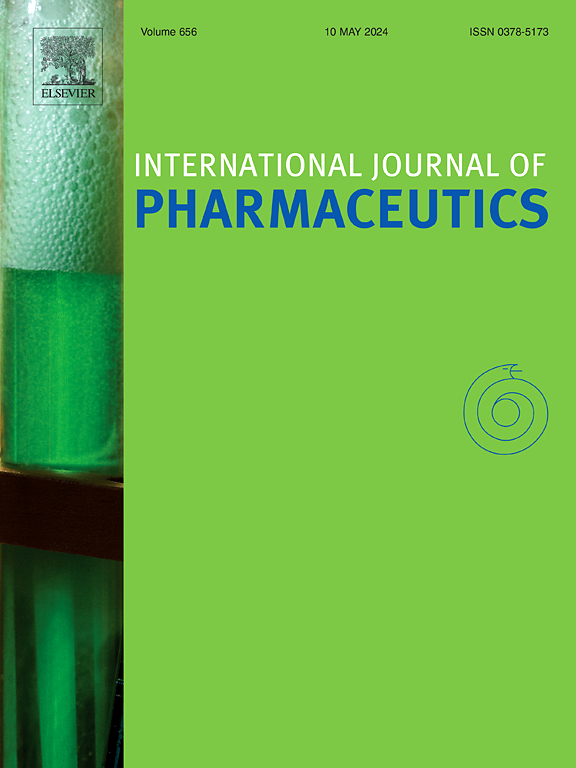LDLR-targeted orlistat therapeutic nanoparticles: Peptide selection, assembly, characterization, and cell-uptake in breast cancer cell lines
IF 5.3
2区 医学
Q1 PHARMACOLOGY & PHARMACY
引用次数: 0
Abstract
Motivation
Many cancers overexpress low-density lipoprotein receptors (LDLR), facilitating cholesterol metabolism for tumour growth. Targeting LDLR offers a promising strategy for selective drug delivery. Orlistat, a fatty acid synthase (FAS) inhibitor, has shown anti-cancer potential, particularly in tumours with high FAS expression. This study introduces an LDLR-Orlistat Targeted Nanoparticles (LDLR-OTNs) to enhance cancer cell uptake via LDLR-mediated endocytosis. The objectives include synthesizing lipid-based orlistat nanoparticles, functionalizing them with an 11-mer LDLR-binding peptide, assessing uptake and cytotoxicity in three LDLR- and FAS-expressing breast cancer cell lines (BT-474, MDA MB 453, MCF-7), and comparing uptake kinetics with non-targeted nanoparticles.
Methods
Orlistat nanoparticles (ONs) were synthesised via rapid solvent exchange, producing uncoated ONs, POPC-coated ONs (POPC-ONs), and LDLR-targeted ONs (LDLR-OTNs). Targeting was achieved by conjugating an 11-mer binding peptide (RLTRKRGLKLA) to DSPE-PEG5000 maleimide via click chemistry, confirmed by Ellman’s test. Nanoparticles were characterised using DLS and TEM. Cellular uptake over 24 hours was assessed using fluorescence-labelled POPC-ONs and LDLR-OTNs, and uptake kinetics were analysed. Suramin-blocking studies were used to confirm LDLR-mediated uptake. A 48-hour cytotoxicity assay quantified IC50 values in the aforementioned cell lines.
Results
TEM data showed that LDLR-OTNs (33 nm) were smaller than untargeted POPC-ONs (58 nm) and uncoated ONs (67 nm). Ellman’s test confirmed > 99.2% peptide conjugation. Cellular uptake of LDLR-OTNs was rapid, with significant fluorescence by 1 hour and a kinetic plateau at 24–48 hours, with data fitting to a modified exponential model, while that of untargeted POPC-ONs had lower initial uptake, following a logistic model. Suramin blocking reduced LDLR-OTN uptake, confirming receptor-mediated entry. Cytotoxicity assays yielded IC50 values of 23.8 µM (BT-474), 25.8 µM (MDA MB 453), and 8.2 µM (MCF-7), with maximal inhibition at 48 h.
Conclusions
LDLR-OTNs demonstrated receptor-mediated uptake and potent cytotoxicity in LDLR- and FAS- overexpressing breast cancer cells. These findings support LDLR-targeted nanoparticles as a promising approach for delivering FAS inhibitors to LDLR-rich tumours, meriting further investigation in targeted cancer therapy development.

求助全文
约1分钟内获得全文
求助全文
来源期刊
CiteScore
10.70
自引率
8.60%
发文量
951
审稿时长
72 days
期刊介绍:
The International Journal of Pharmaceutics is the third most cited journal in the "Pharmacy & Pharmacology" category out of 366 journals, being the true home for pharmaceutical scientists concerned with the physical, chemical and biological properties of devices and delivery systems for drugs, vaccines and biologicals, including their design, manufacture and evaluation. This includes evaluation of the properties of drugs, excipients such as surfactants and polymers and novel materials. The journal has special sections on pharmaceutical nanotechnology and personalized medicines, and publishes research papers, reviews, commentaries and letters to the editor as well as special issues.

 求助内容:
求助内容: 应助结果提醒方式:
应助结果提醒方式:


